The Cultural Tourism of China's Dehang Miao Village
When Chinese ethnic minorities, economic development, and tourism intersect, what is the outcome?
This was originally written as a Twitter thread on July 10, 2022 and is republished here with minor edits and reorganization in essay format. After my exploration of the “ghost city” of Jishou, I made way deper into rural western Hunan, continuing to the Miao ethnic village of Dehang, part of the Aizhai Wonders Scenic Area.
In their attempts to bring poverty alleviation programs to China’s most remote and rural regions, Chinese development planners usually look to leverage whatever natural or cultural resources the region already possesses. If the area happens to have beautiful mountains, canyons, or rivers, these can become scenic attractions. If it has massive bamboo forests, it can build an industry for handcrafted bamboo furniture. And if a village has a unique cultural identity associated with an ethnic minority group, their culture can be developed into a feature, where non-minorities (i.e. the Han Chinese) can come to engage in ethnic tourism.
Conducting ethnic tourism is a somewhat fraught endeavor, in my opinion, requiring the developer to carefully walk a thin line in order to pull it off in a respectful and tasteful way, but I believe it’s possible. Today, I will talk about what I think a success case looks like.
Aizhai 矮寨 is a newly-rated 5A-rated attraction (the 5A rating was just earned in June 2021) west of Jishou city. Within the Aizhai scenic area are several Miao ethnic villages, Dehang Canyon, and the Aizhai Grand Bridge. The entire area is out-of-this-world beautiful, especially when the mist rolls in around the mountains and canyon rocks. It's the kind of place to make you believe that fairies and mountain spirits are real.
I think most tourists do it as a day trip package tour, but I was in no rush, so I booked 3 nights in a guesthouse in Dehang Village 德夯村. Aizhai Wonders markets itself as a site for both natural (scenic) & cultural (ethnic) tourism and I felt I'd get more of both actually staying there. Dehang Village lies within Aizhai scenic area, at the mouth of Dehang Canyon, administratively part of Jishou but 30+ km away from the city center.
Compared to other Chinese tourist villages I've visited in the past, Dehang Village (population ~500) is underdeveloped, probably because the 5A rating is so new. There are a few guesthouses and only a handful of places to eat or buy souvenirs. The infrastructure is mostly geared towards day travelers, not people staying overnight.
Dehang is a Miao ethnicity village (an ethnic group that also includes the Hmong people). The Chinese Miao are native to western Hunan, Sichuan, Guizhou, and Yunnan, numbering around 11 million total. The Miao and Tujia ethnic minorities make up more than 70% of the population in Xiangxi.
The characters used in the name “dehang” mean nothing in Mandarin; it's a transliteration of two Hunan Miao words, “de” meaning “beautiful” and “hang” meaning “canyon”. So Dehang Canyon is “Beautiful Canyon Canyon”…hah.
At some point in the near past, this area was underdeveloped enough to qualify for poverty alleviation programming and funding, although I think it has probably moved past that threshold now. At the entrance to the village is a Miao culture "poverty alleviation demo area." It has attractions including tea drying, rice-cake making, extraction of tea oil, basket-weaving, etc. Further into the village is a performance hall, which has twice-daily performances of Miao dancing and singing (we'll get back to this).
Before talking to anyone, I can tell the province hasn't gotten its investment back on the 5A upgrade so far. Half the guesthouses have locks on the doors. The performance hall is only a quarter full (at best) during shows. Most areas with the cultural exhibitions are closed. The tourist traffic looks…weak.
This is obviously covid tourism downturn. Online sources say Aizhai used to get 300k tourists a year before Covid, even before the 5A rating. The infrastructure investments, exhibition area, performance hall, all made sense before. There's even a brand-new shiny red fire truck, which is a funny investment, since it can probably only reach 15% of the houses in the village (the road stops here at the parking lot). But I know fire prevention measures are a necessary condition for the 5A rating, so I suppose that’s why it’s here.
The tourism development company that operates Aizhai Wonders Scenic Area (including Dehang Village) appears to be 100% owned by Jishou City, according to Tianyancha, so in Dehang at least, these are local investments into local tourism infrastructure. In fact, the parent company in the screenshot below is the operator of several attractions in the Jishou area, including the Qianzhou Ancient Town I mentioned in a previous post.

Okay let’s get back to Dehang. On my first day, I checked out the performances.
"Traditional Miao courtship dance"
"Traditional Miao folk song"
"Traditional Dehang drum performance"
The performances are fine, and audience was into it, but the performers look bored, as was I, so I left the performance hall halfway through the show and went looking for locals to talk to. Outside nearby, I find a local woman managing her breakfast stall and shop. It's already 34 degrees, so I buy an ice cream and linger while eating it, asking questions.
The local lady’s surname is Shi. She has a heavily-tanned, weathered face covered in lines when she smiles, which is often. She could be 35 years old...or 50. Auntie Shi would become my primary source for Miao culture fact-checking, village history, and general local gossip for the next 3 days.
To get the conversation started, I told her I had just come from the performance. I asked her where the performers come from. Are they local? “Yes, some are from here, or other Miao villages nearby.” How are the wages? “3-4k per month, the same as you could make doing other tourism jobs.” Does she like to sing & dance? “No, don’t really like singing or dancing, personally.“
She's been open so far, so I ask more pointed questions. What are these costumes the performers wear while dancing? Are those real Miao clothes? She laughs, gesturing to her own clothing (pants with an embroidered design near the ankle). "We usually wear this. You can't wear a dress here...it’s not practical"
I ask: Do Miao people ever wear those clothes? Or are they only to show tourists? She thinks for a second. "Maybe for a wedding in the old days. But definitely not for daily life. It would get dirty. And we are in a canyon...you can't wear a dress here. Too many mosquitoes".
I ask: What do you think about tourists coming here to watch so-called Miao performances while wearing those clothes? "I don't care, as long as they enjoy it. They will come to the village and spend money". To buy your ice cream?” She laughs. "Right. To buy my ice cream"
What about the tourists that rent local clothing and take pics? Does that bother you? She didn't get it. "What's wrong with that?"
Because they aren't Miao. Should they wear Miao clothes? "If they like it, then why not?"
Do others in the village mind? "I don't know. I don't think so."
My guesthouse is at the entrance to the village, next to the village Party service center and the parking lot. It's not fancy, but it is pretty new. She asks how much I'm paying per night. "200…?" She makes a grimace and sucks in air through her teeth. “Is that too expensive?” I ask with some trepidation.
Oh yeah, it is definitely too expensive. It’s probably the most expensive guesthouse in town. She tells me most of the guesthouses in the village can be had for under 100 RMB per night. Most of these guesthouses aren't listed on Ctrip though. Bummer.
I ask whose cars are in the parking lot next to my guesthouse. "Only villagers...outside cars aren't allowed to drive in". Hmm. Not bad:
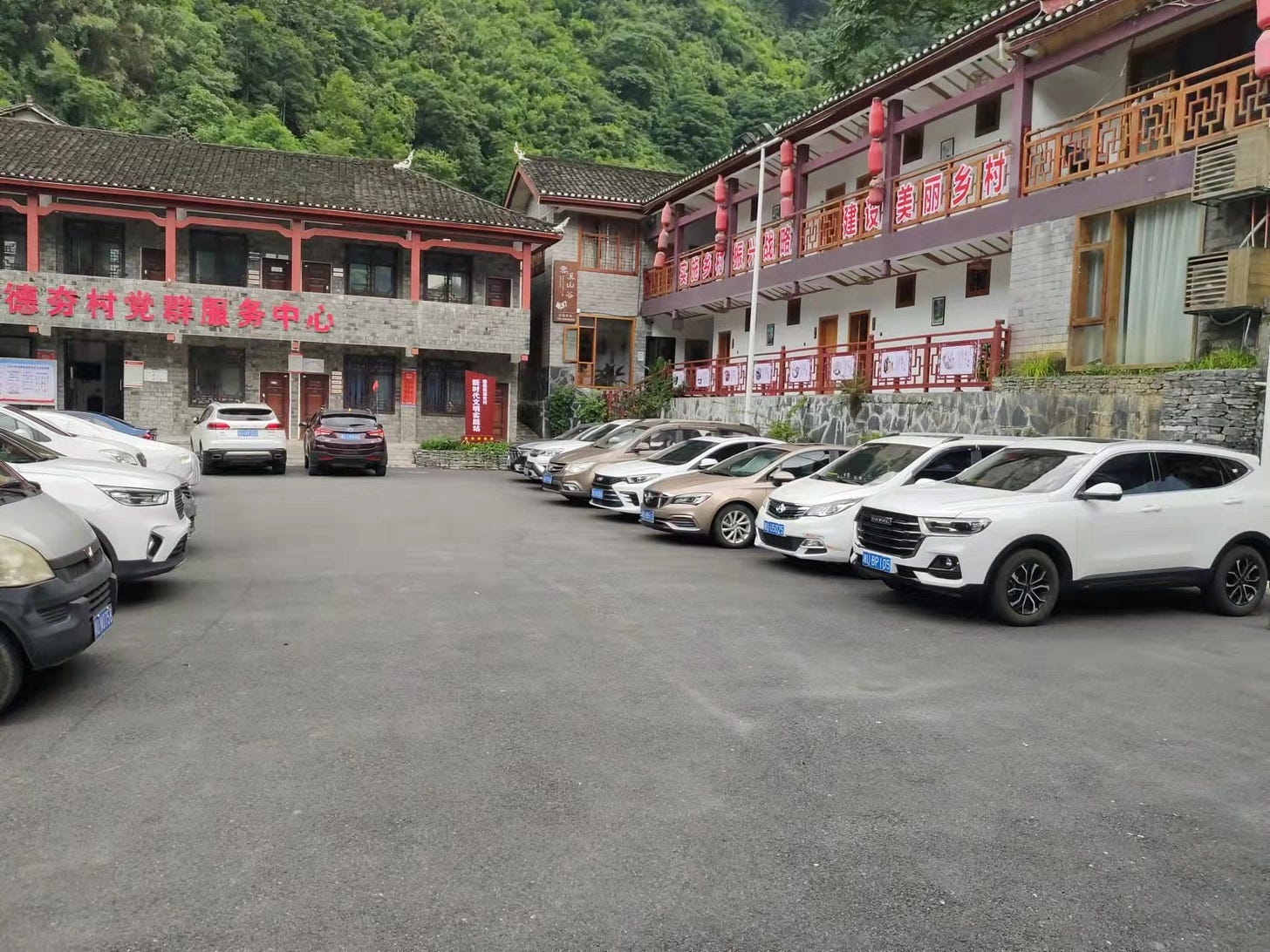
So, the village economy is good? Besides guesthouses and running shops and restaurants, does the tourism development company pay dividends to the villagers for turning their village and culture into a tourist attraction? “Yes, we get dividends, but if they don't make money, we don't get money. Since covid, there are less tourists, so we make less.”
She continues on with some folksy wisdom: “You know, when the boss eats well, everyone gets to eat well. But when the boss can only afford to eat rice, then we can only eat gruel.”
This dividend/revenue sharing scheme is similar to what I saw at Longji Rice Terraces, where Yao ethnic villagers earn 10% of the scenic area ticket sales, 7% of the cable car sales, and a bonus of 1000 RMB/mu of fields that they tend (+200RMB/mu to delay the harvest during the golden tourism week).
Overall, the village looks to me like a moderate economic success case for cultural tourism poverty alleviation, Covid notwithstanding. Hunan leaders appear motivated to chuck money at Xiangxi until the relevant poverty-busting KPIs are met, and it shows. There are new buildings, new infrastructure, and things seem fairly cozy, if a bit remote.
And more importantly, I must say that at least in this village, this development appears to have be done on terms acceptable to the locals. If it’s acceptable to the locals, then I don’t think I have any room to complain either.
A generation ago, they were sustenance famers eking out a meager existence in a picturesque but very damp canyon. Now they eat well, buy cars and can aspire to send their kids out to school, for education and better lives.
There's a common criticism of China's attitudes towards ethnic minorities from foreign commentators, that these minorities are caricatured for entertainment, reduced to stereotypes of "rich traditional culture" and "good at singing and dancing" 能歌善舞. And the assumption, by extension, that they are upset about it.
But that's not what I found in Dehang. Auntie Shi was completely pragmatic on the trade-off (not that she framed it in as such) between economic development and the dilution/distortion of Miao cultural heritage. Over three days and plenty of chats, I gave her plenty of opportunities to say something about it...and she didn't.
Does it HAVE to be like that? I dunno. Maybe there's a more optimized, more ideal way to develop these communities so they eat well, buy washing machines, don't have to leave the village and get to their send kids to school, WITHOUT losing an ounce of authenticity along the way. I don't know it though. Do you?
And since I don't know it, I have tempered my past inclinations to be critical of this style of cultural tourism. I think stereotyped messaging about singing, dancing ethnic minorities is not great, but if that helps make this kind of rural development tourism work better, I understand it.
I do have a standard for this, mind you. For instance, I really disliked my visit to the Ethnic Minorities Village in Kunming. It felt like a zoo. In that case, I couldn't see the benefit for the minority communities, it was pure cultural consumption with very mild trade-off benefits. I felt very uncomfortable while I was there and wouldn’t recommend it to anyone.
But in cases like Dehang, or Longji rice terraces last year, the economic trade-offs are obvious and apparent. I don't think I have the right to expect or demand they reject clear improvements to their quality of life in the name of anthropological or cultural purity. Nor do I have the right to convince Auntie Shi to be upset about something that she isn't. It’s none of my business whether or not she’ll “regret it someday in the future,” and it would be patronizing of me to push her to think in that way.
She's just not concerned about Han people LARPing around the village in Miao wedding dresses or enjoying “traditional ballads” that aren’t really. She's concerned about selling enough ice cream and rice noodles so her kids will be the first generation in her family to learn how to read and go away to high school and then maybe college. 1
I'm not demanding YOU think a certain way about any of this, dear reader. Surely, others will reach different conclusions. I'm a guest in this country. A privileged one. A white male from a wealthy nation. I’m always trying to be aware of how my cultural biases and my privileges have impacted my observations and perspectives. This is how I process it today.
Would be neat to see these places Exactly As They Were 50 years ago, when their clothes and songs and dances and way of life were perfectly untainted by modern China and Han tourism? Yeah sure. But also, I don't hope for them to return to that. Because in those times, they relied on back-breaking agrarian labor just to survive, and had their growth stunted permanently by malnutrition and disease. I saw so many hunchbacked elders around the village I thought they had a localized genetic issue until Auntie Shi told me they weren’t born like that; it developed over a lifetime of stooping over to carry those heavy woven baskets on their backs!
It's easy and popular to lean on Western sociological or anthropological tropes like “cultural appropriation” when trying to understand China's relations with its ethnic minorities. I find such (usually well-intentioned!) efforts to be insufficiently nuanced. Based on my views on equitable rural development, I couldn't find anything in Dehang that made me uncomfortable to be a consumer there, and I do recommend it as a destination.
Miao locals like Auntie Shi want to live better lives and create better futures for their children. What they need is not a lecture, but just for people to come to their village to eat and drink and spend money and have a good time. Which I was glad to do.
This was the end of my first Twitter thread about Dehang Village, which ended up being three posts total, covering cultural tourism, local food, cultural observations, and scenery from Dehang Canyon. I’ll post the content about food and scenery later and link to it.

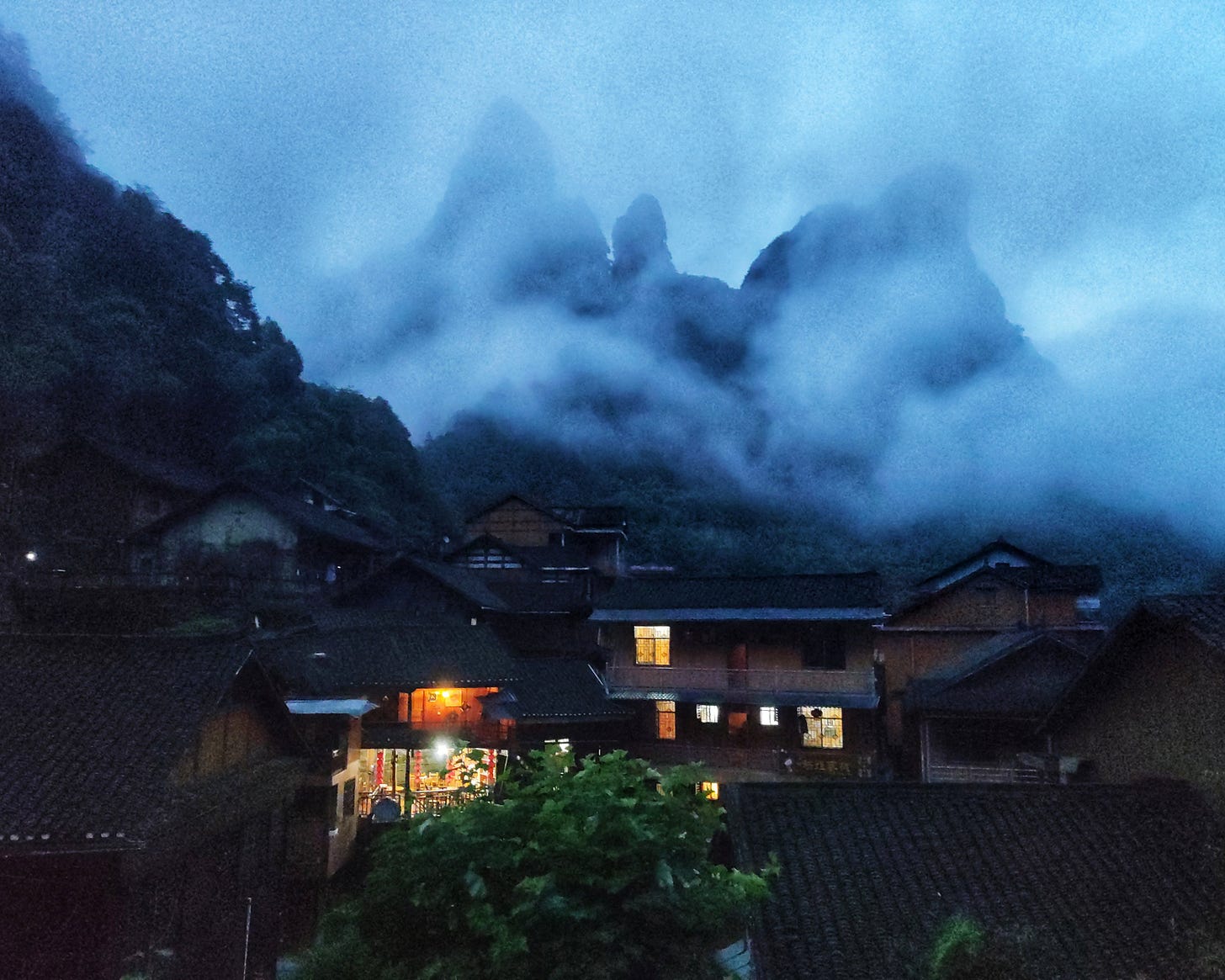
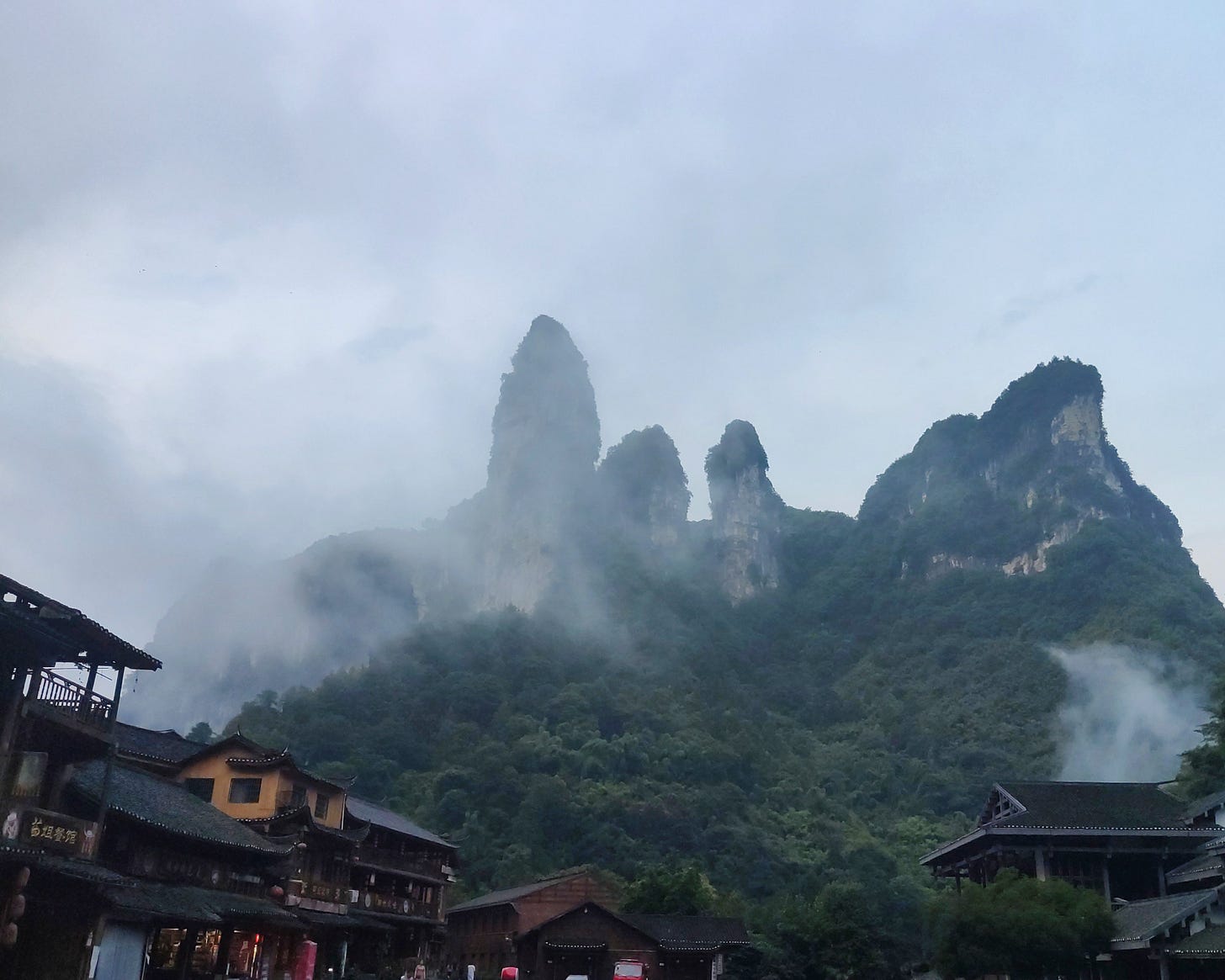
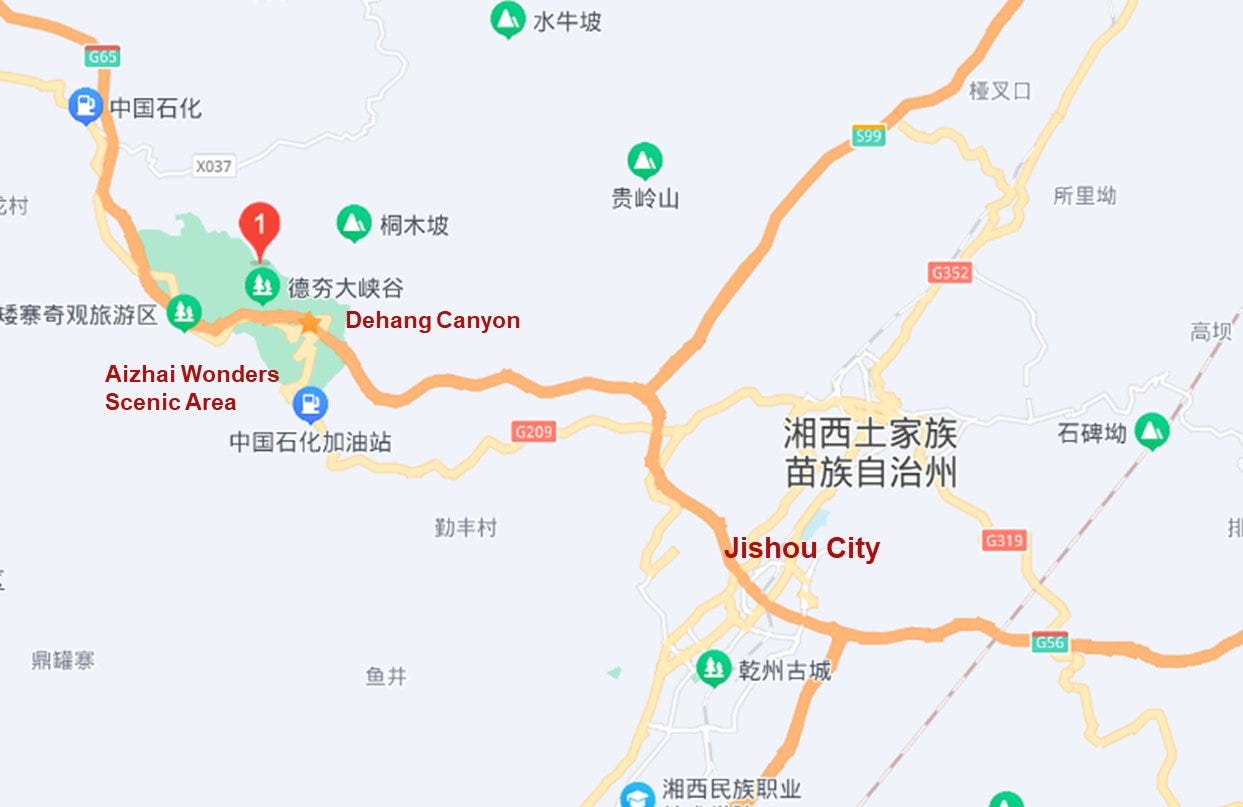
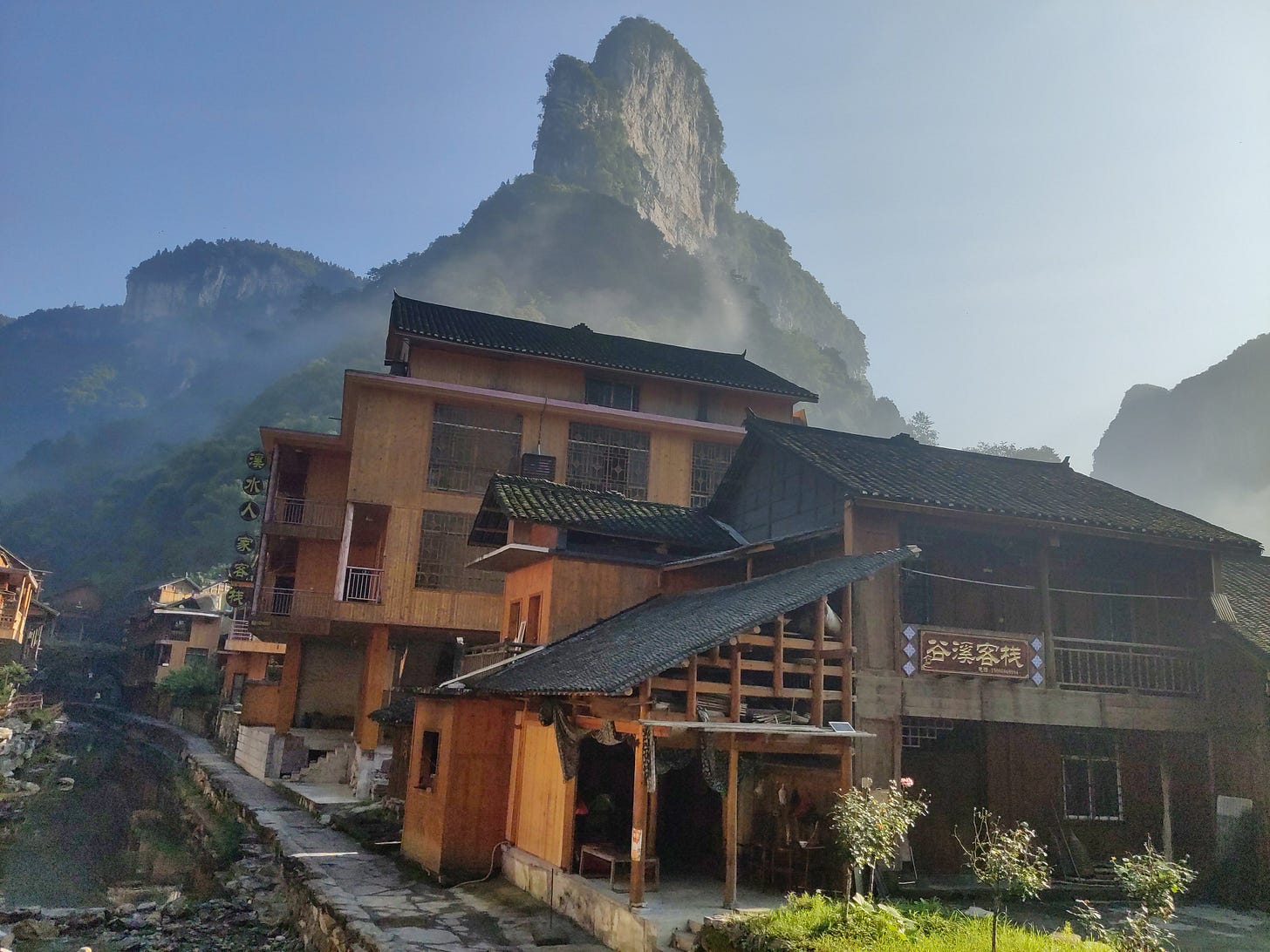
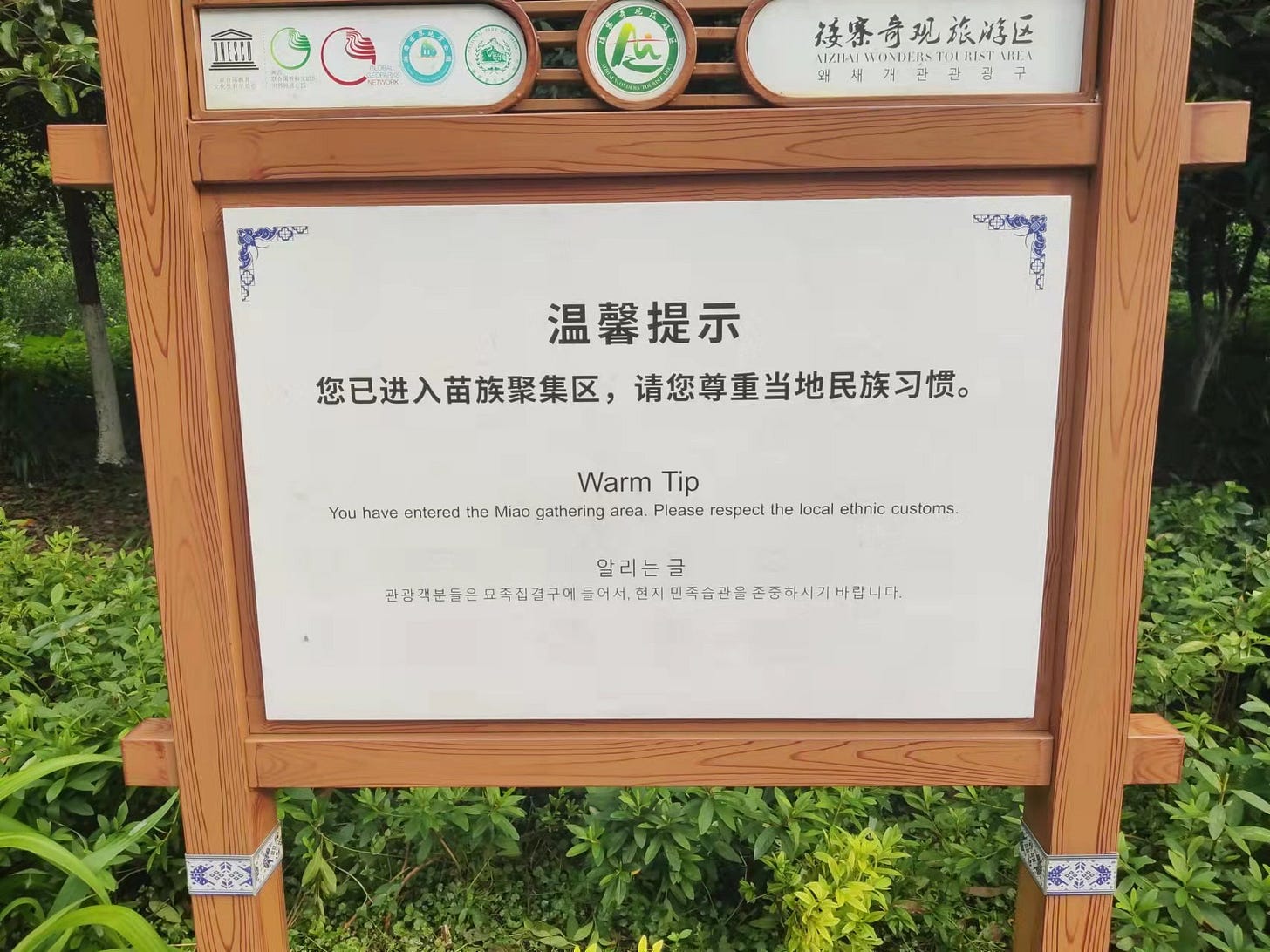
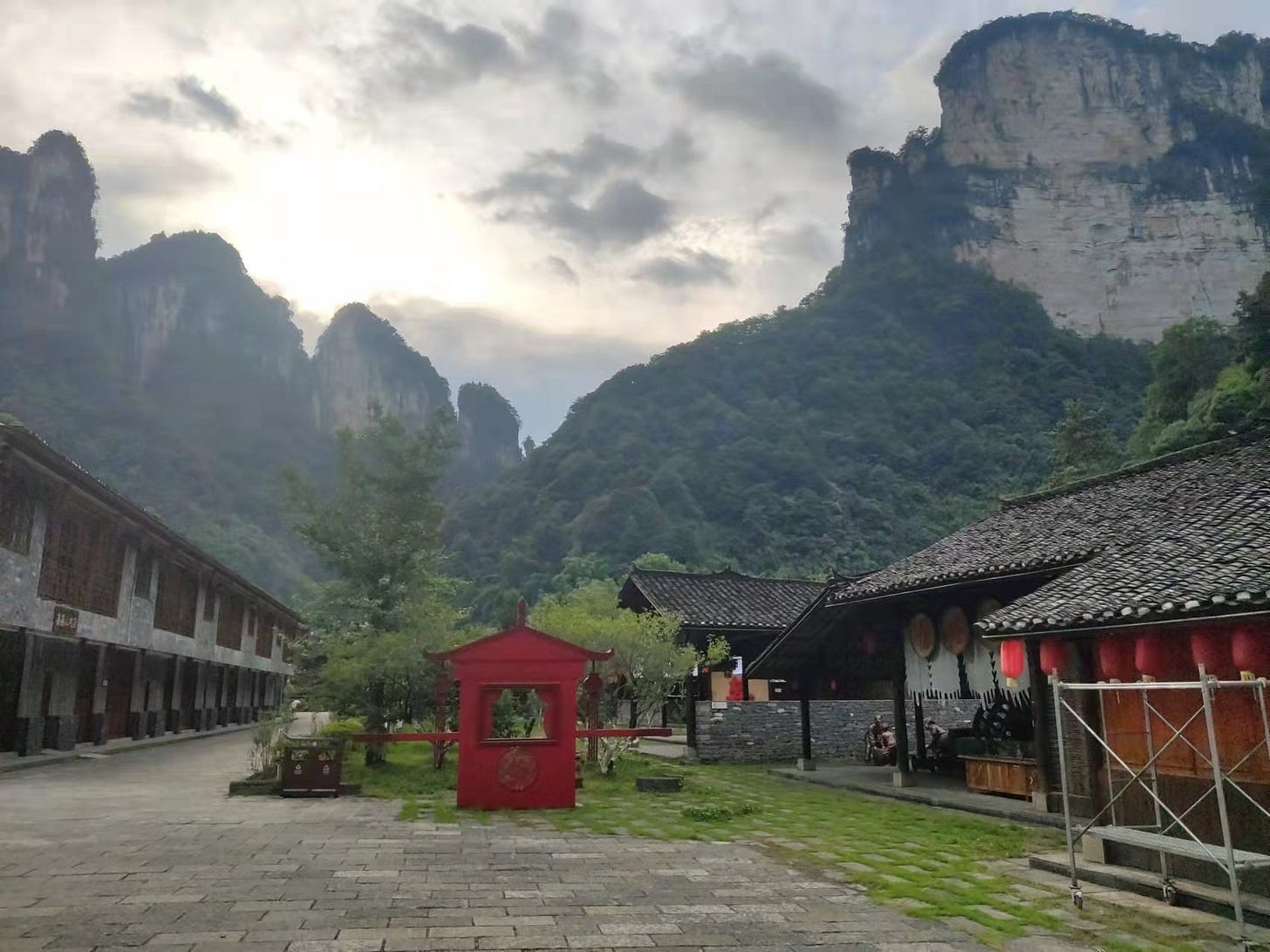
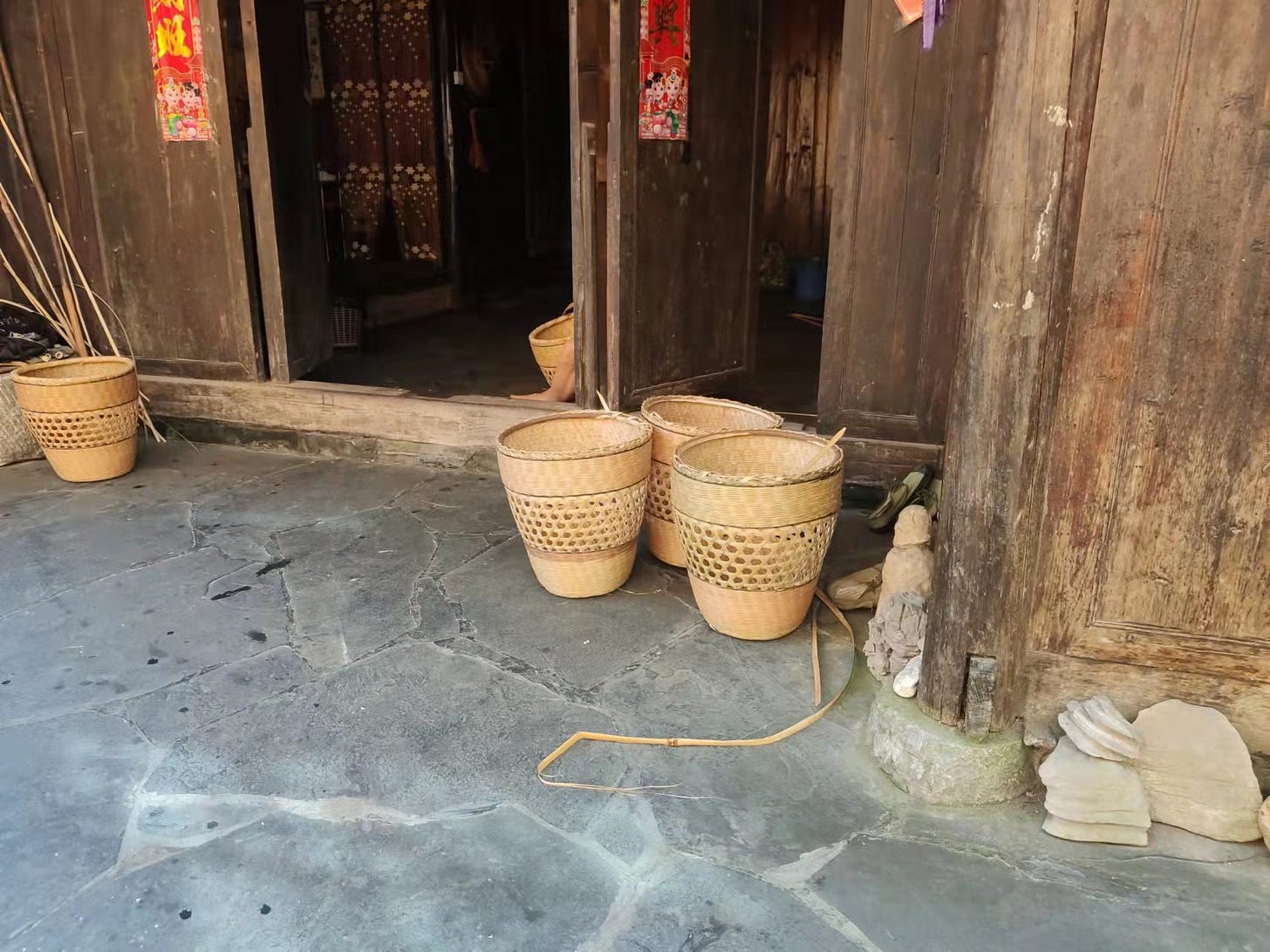
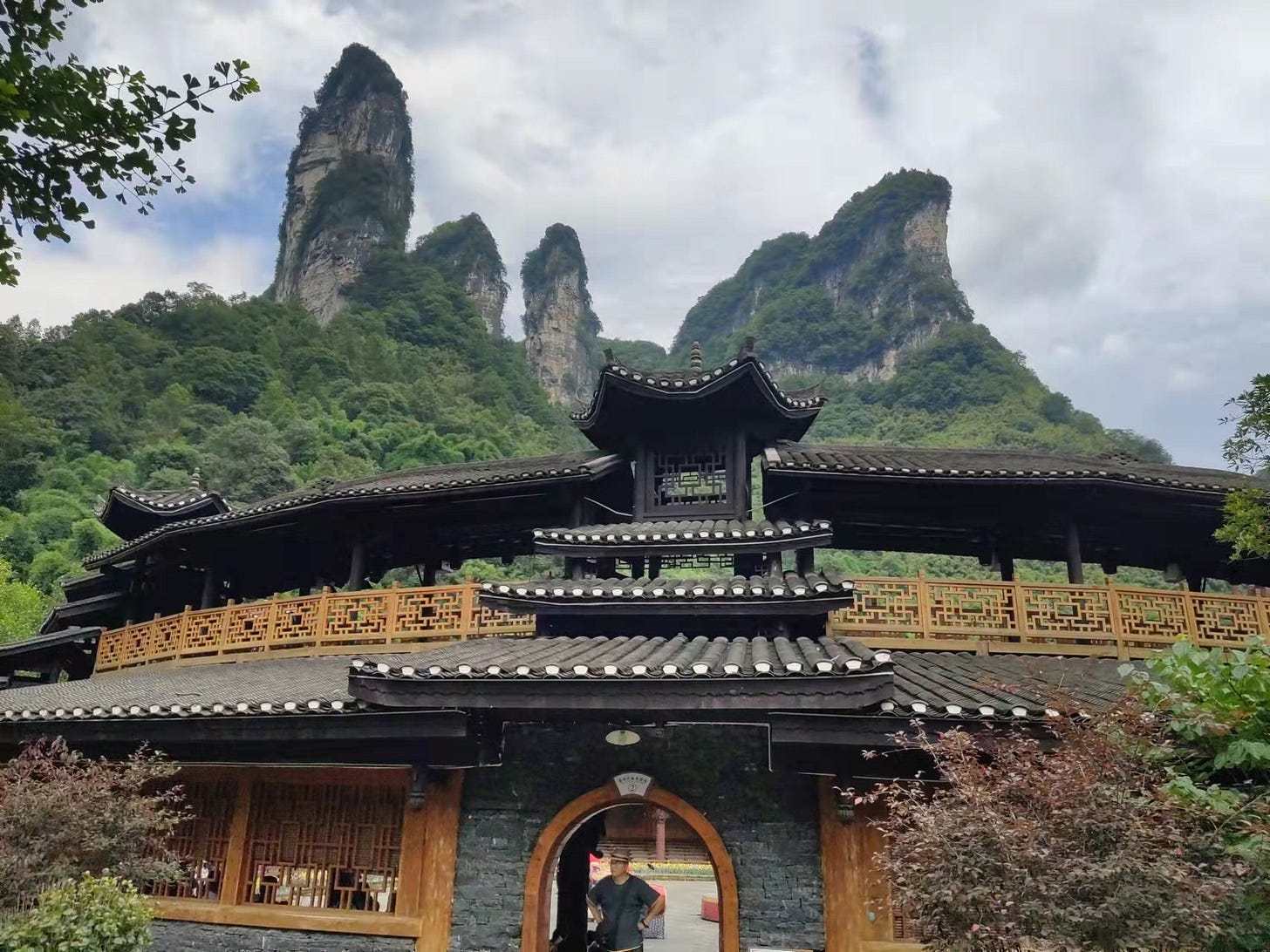
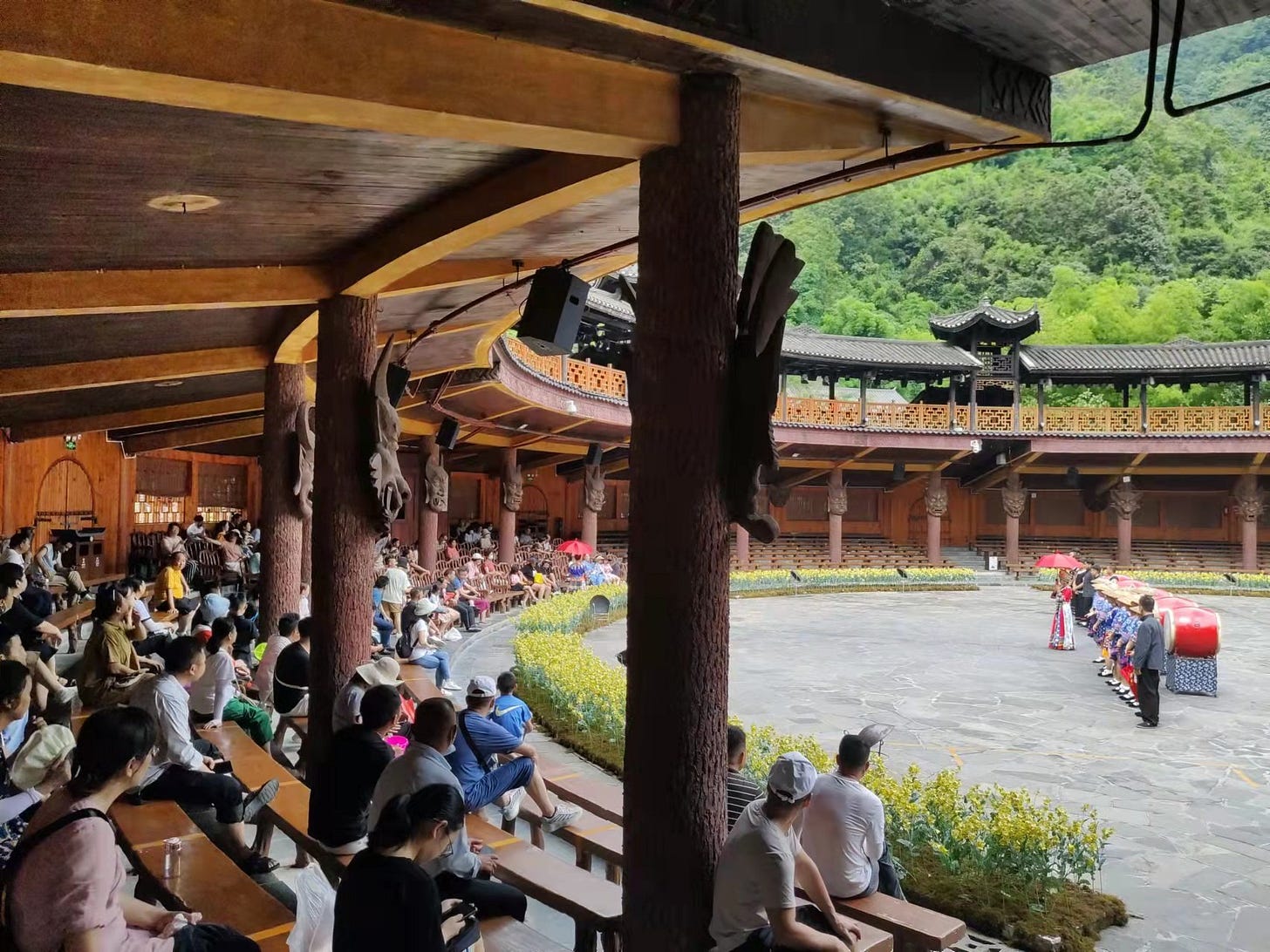
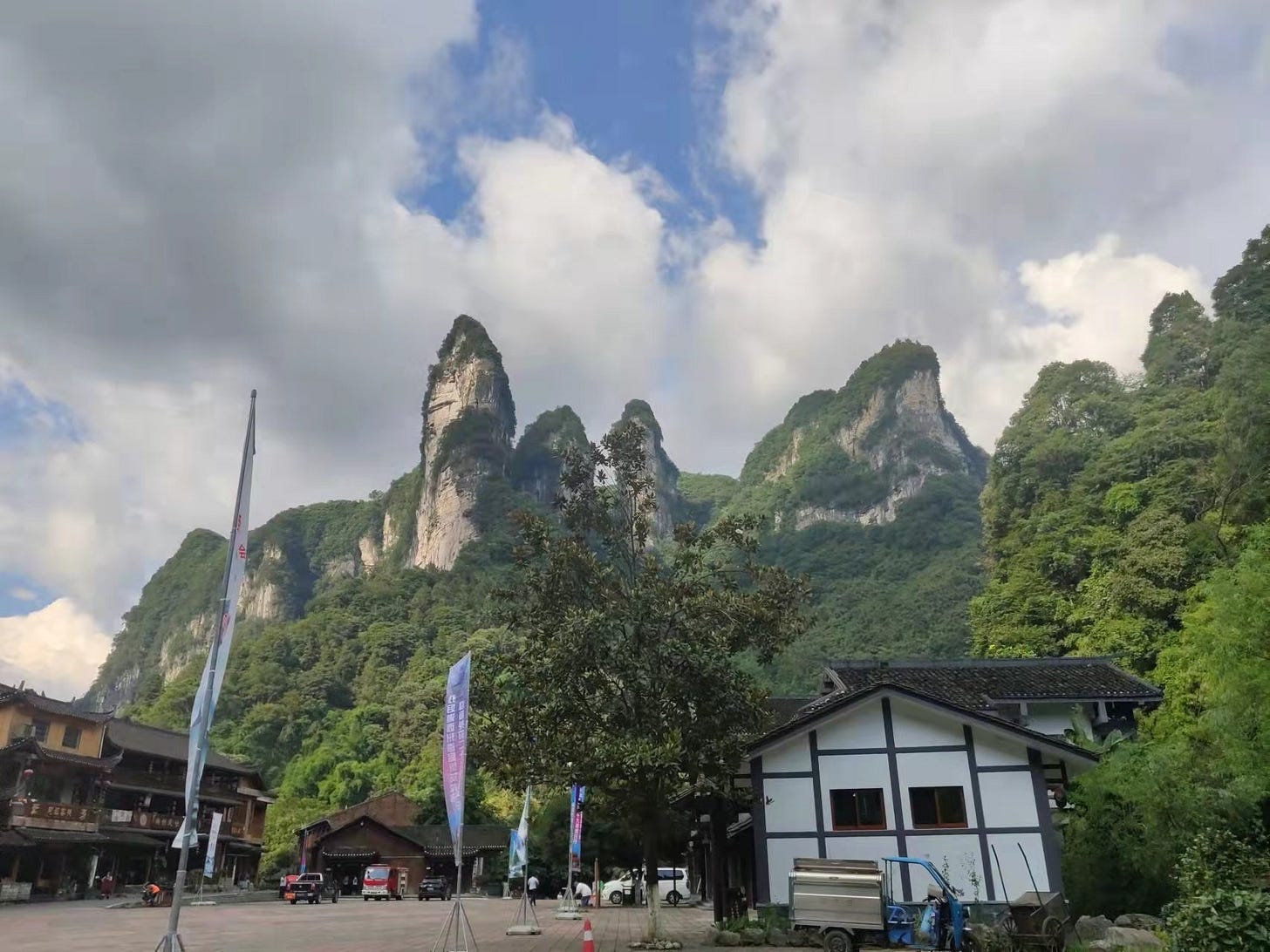
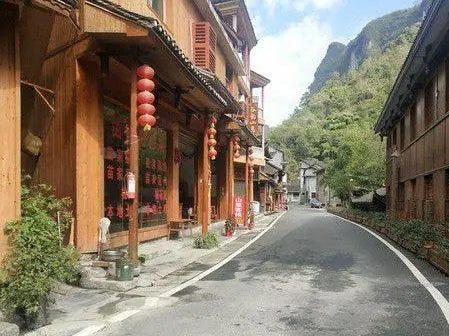

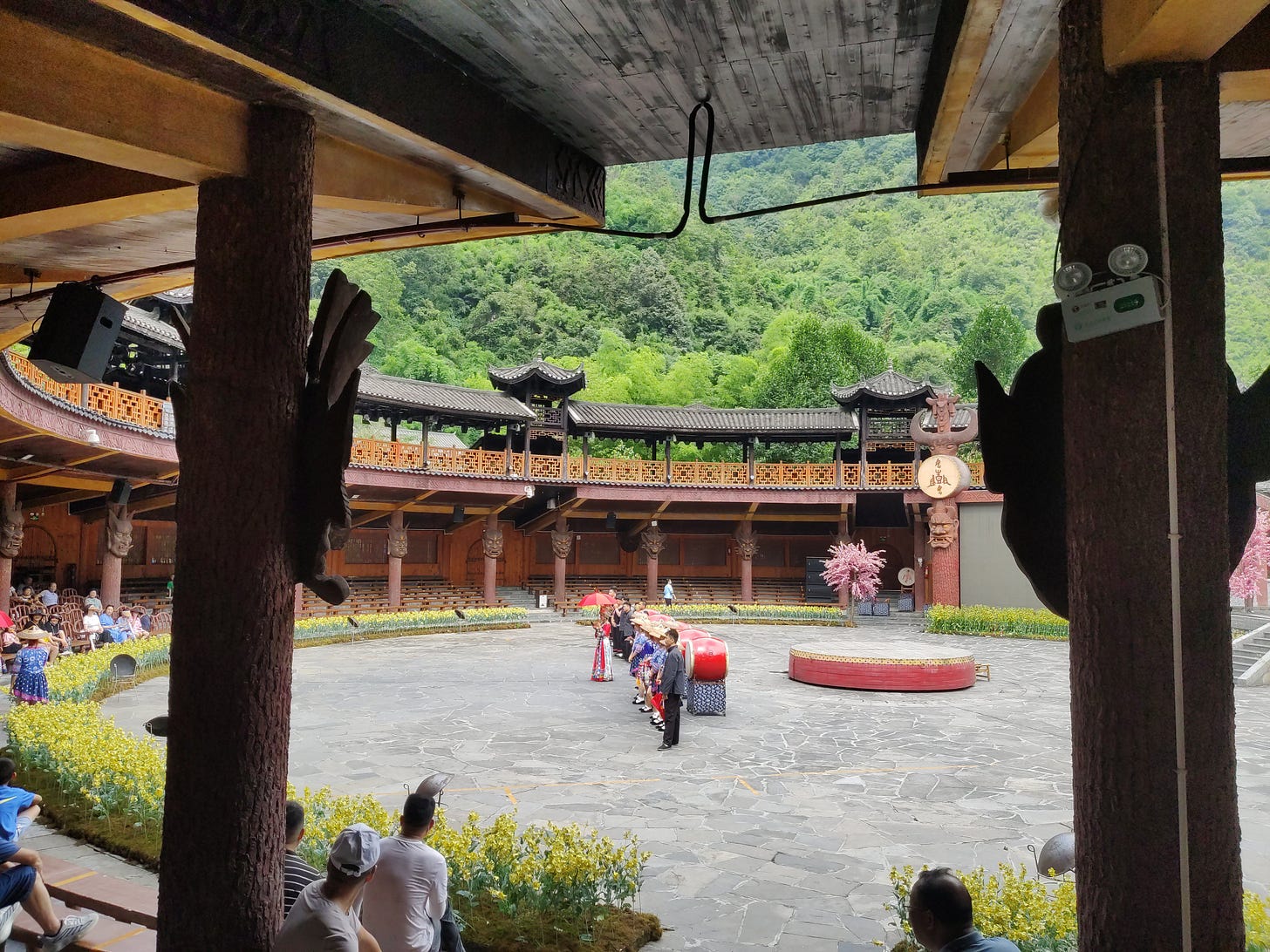
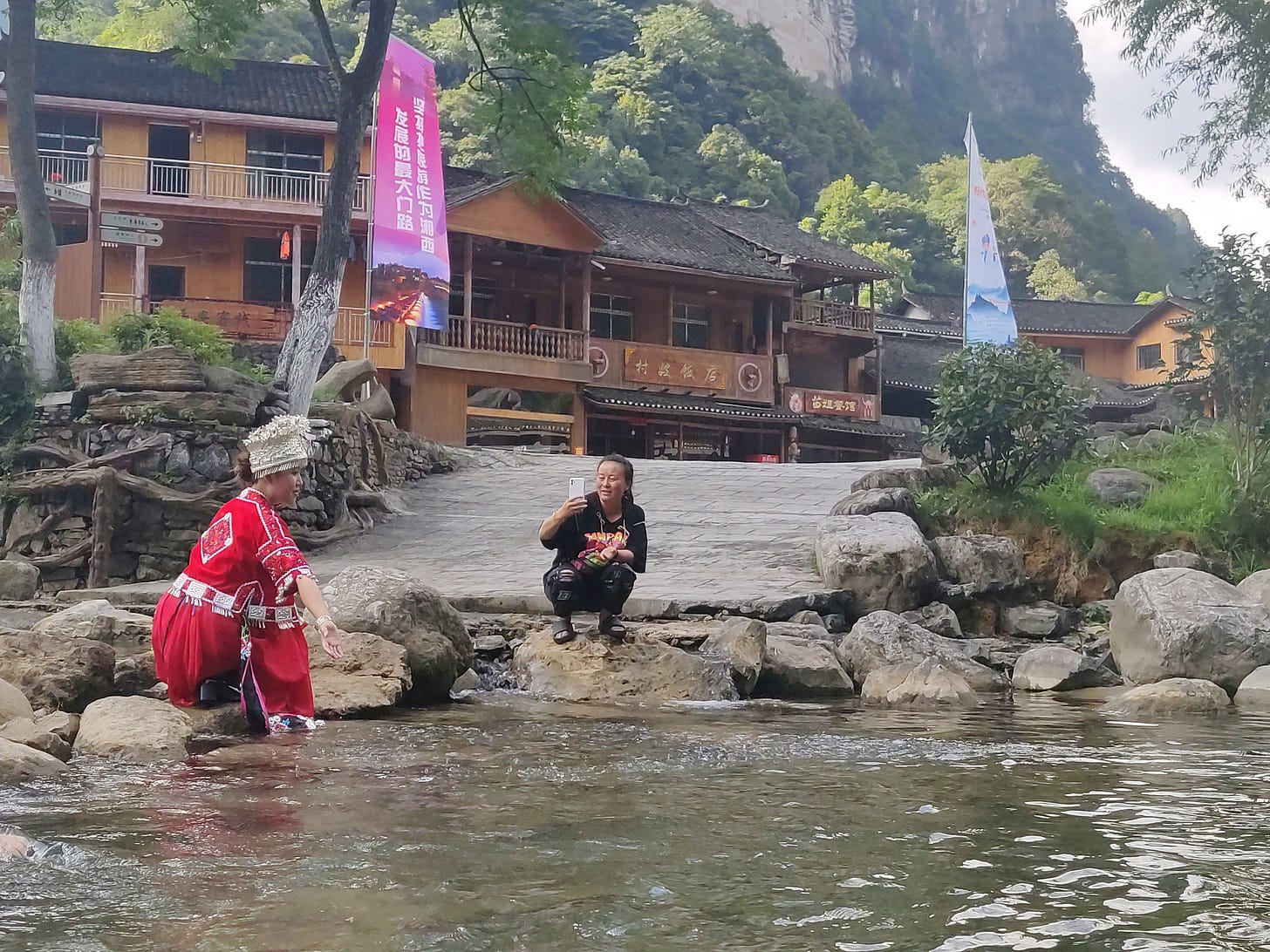
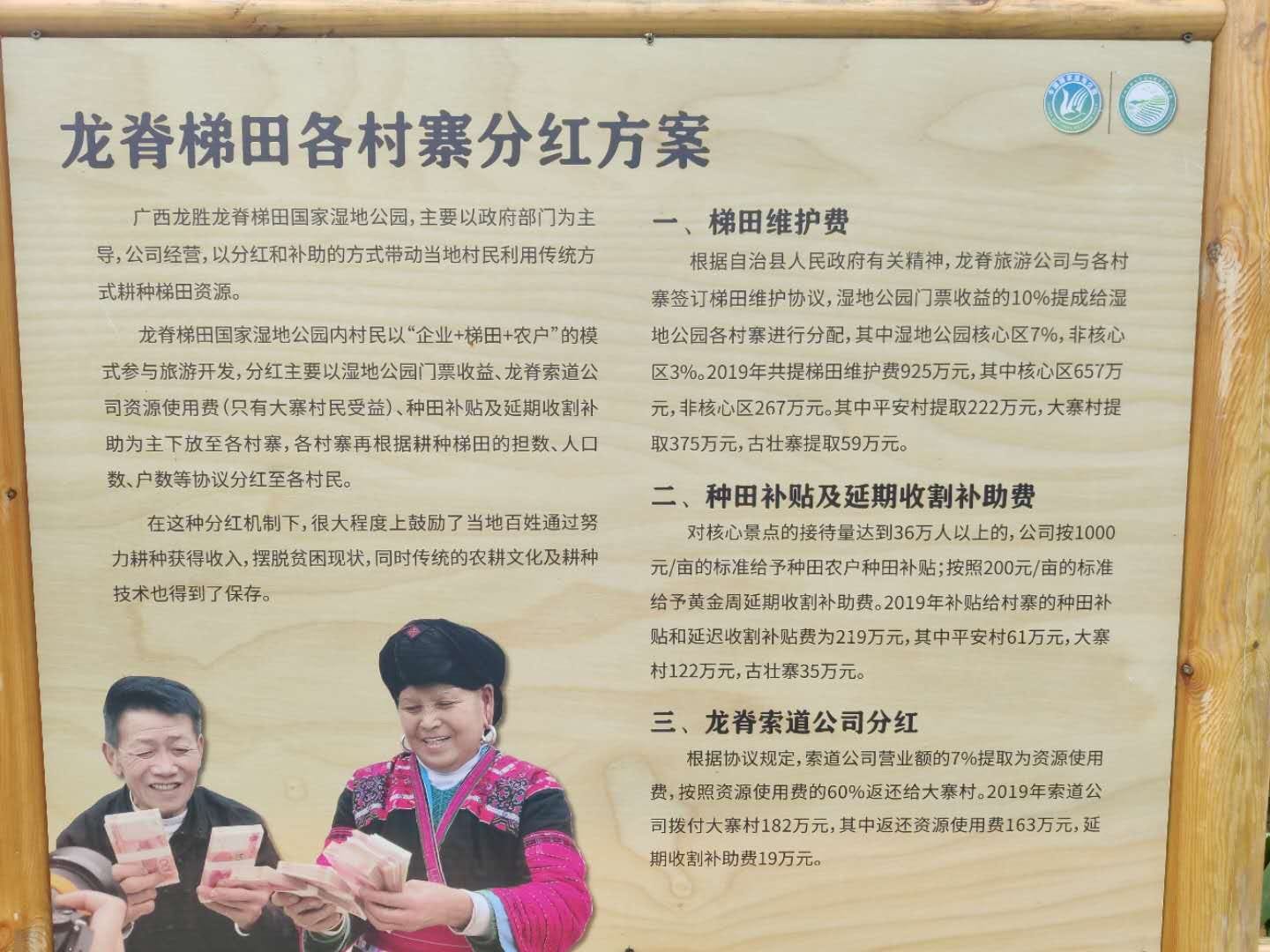
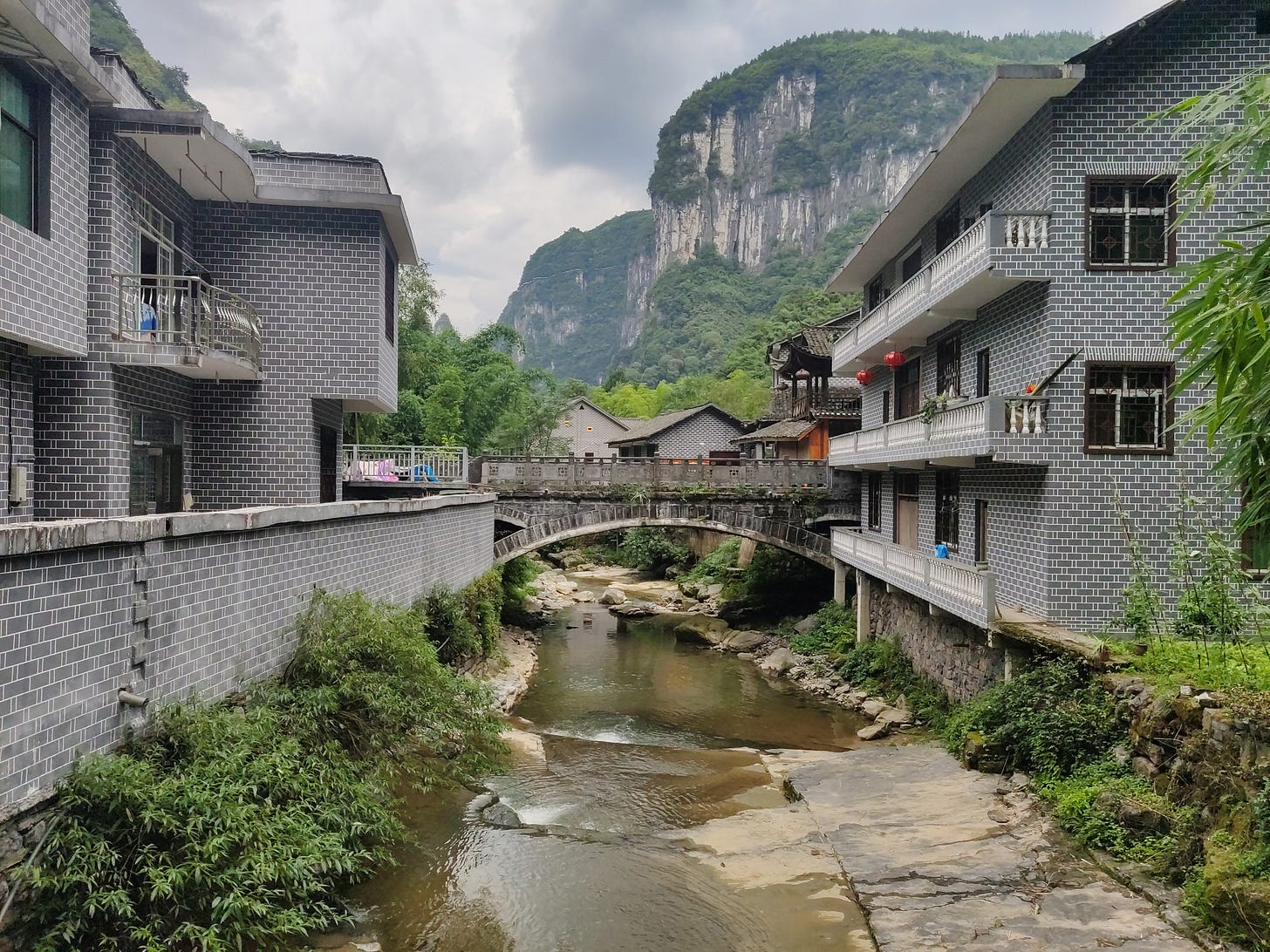
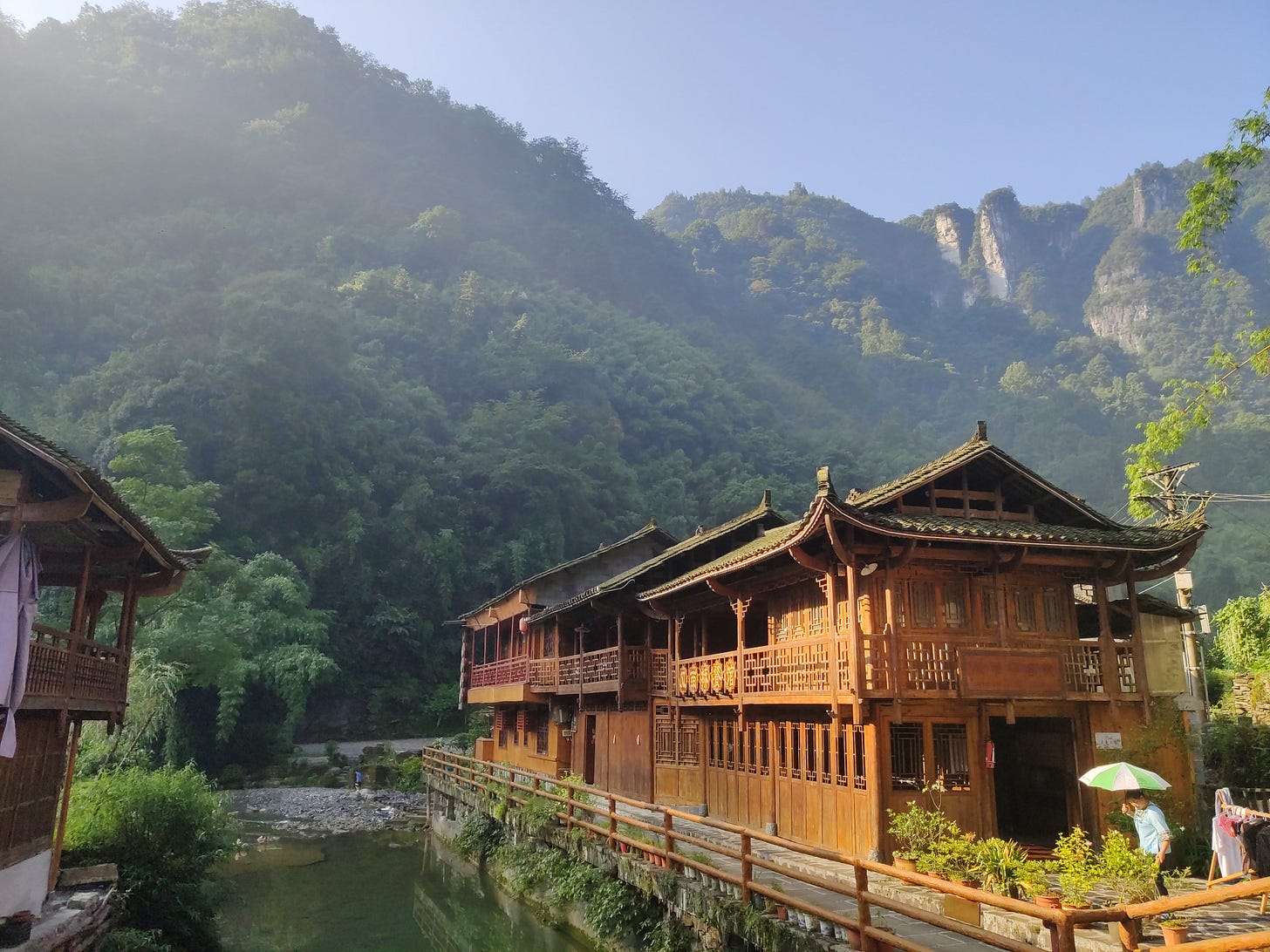
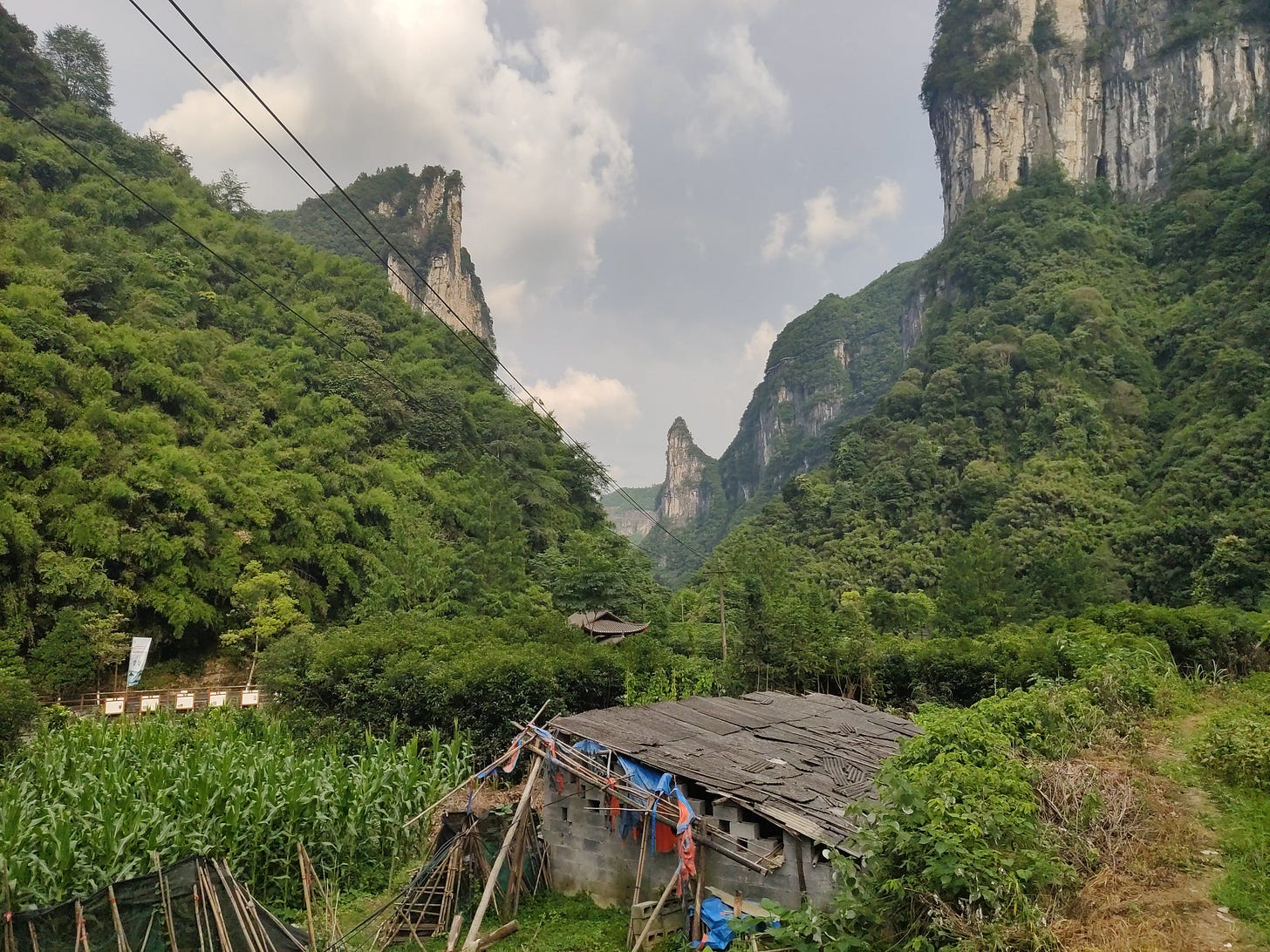
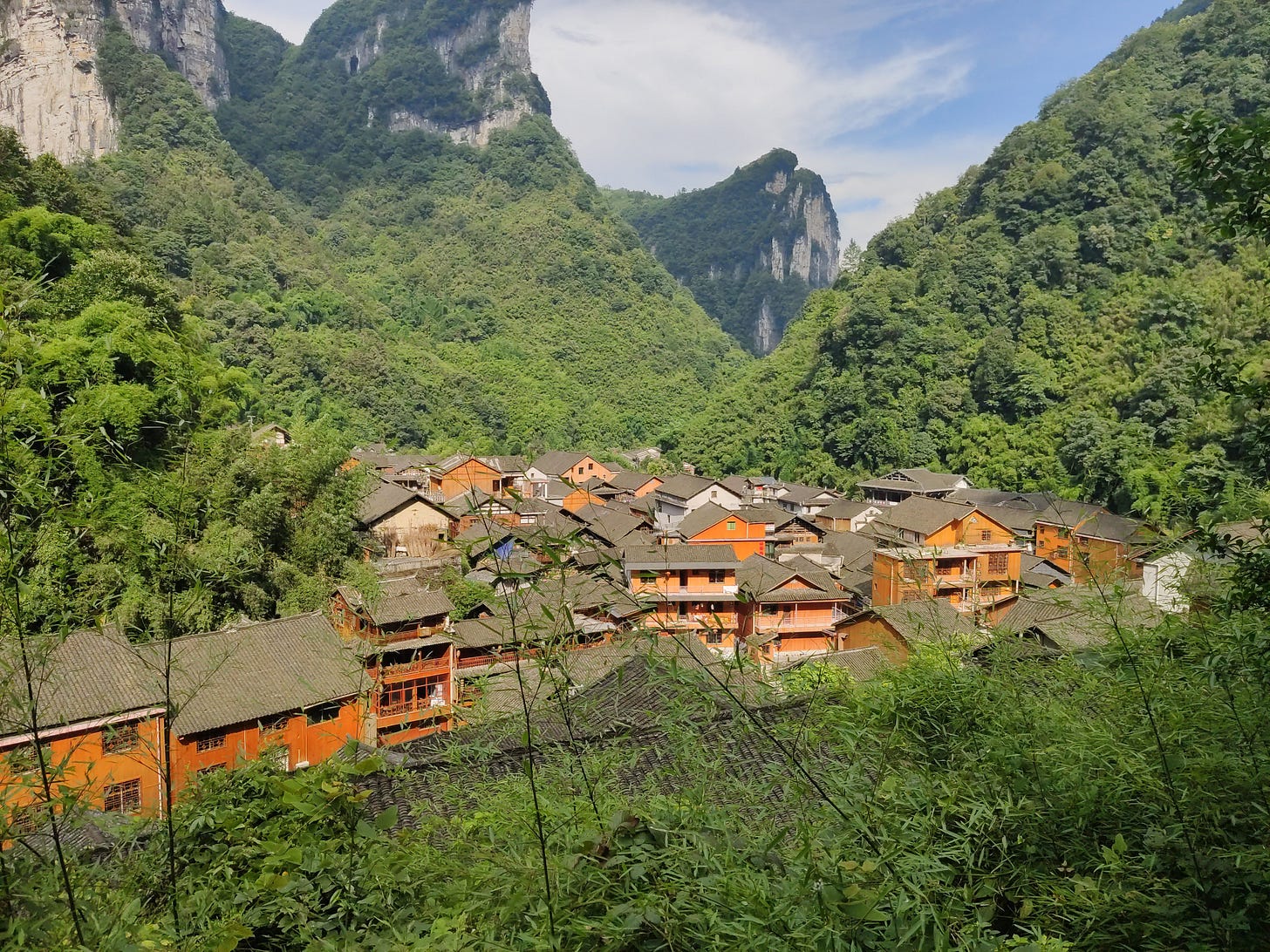
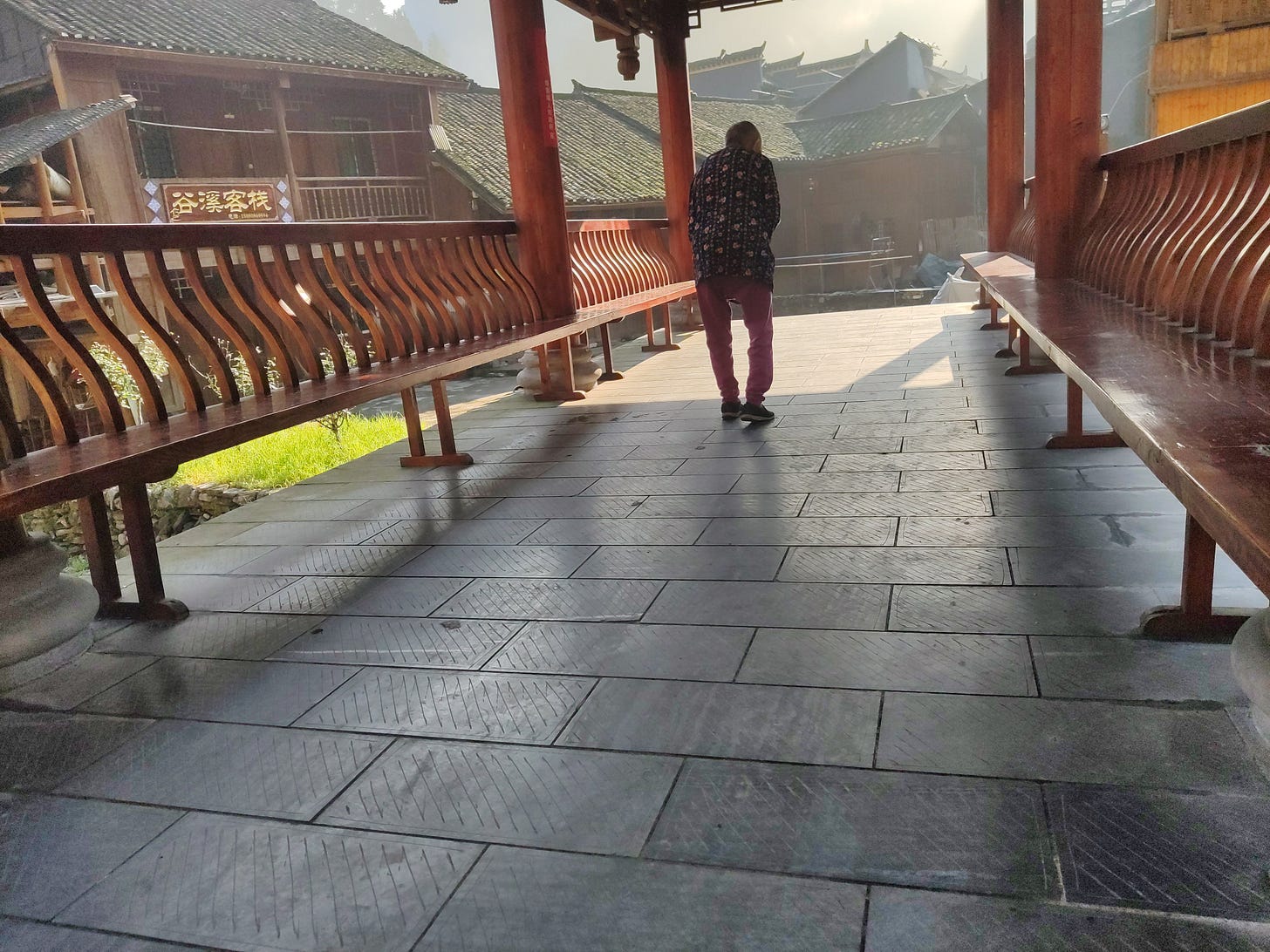
Really enjoy you writing about things that I otherwise would never think about! To your line "Does it HAVE to be like that?... I dunno", don't think anyone anywhere in the world has an answer. And I feel that there is an irony to the people who make that critique of China, where if one looks to say their summer holidays in Western Europe, there is plenty of room for critiquing those countries and histories of "assimilation"/national identity building